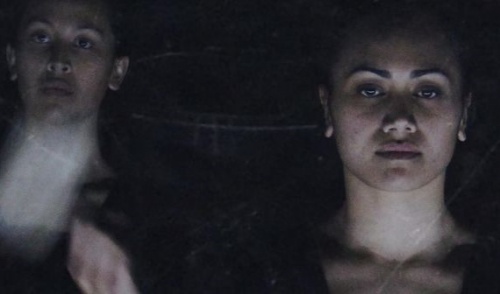Stones in Her Mouth
04/03/2014 - 05/03/2014
New Zealand Festival of the Arts 2014
Production Details
director Lemi Ponifasio
scenography Lemi Ponifasio
dance & vocals Rosie TeRauawhea Belvie, Kasina Campbell, Mere Boynton, Mihiriweti Morgan, Manuao Ross, Ria Te Uira Winitana Paki, Hine Rongonui Kingi, Te Rau o Te Huia Pou, Te Ara Vakaafi, Rangipo Ihakara
lighting Helen Todd
Poi composition MAU Company
Moteatea composition Ria Te Uira Paki, Te Ara Vakaafi, Rangipo Wallace-Ihakara, Mere Boynton
Whaikorero / oratory composition Hinerongonui Kingi
sound Sam Hamilton and Lemi Ponifasio
video Tim Gruchy and Helen Todd
light manager Margareta Andersen
production technician Kelemete Fu'a
technical director Helen Todd
Theatre , Performance Art , Multi-discipline , Dance-theatre ,
90 mins
Wrapped in a cloak of secret power
Review by Jennifer Shennan 05th Mar 2014
From the programme note about the artistic concept of Mau: “In his artistic universe, Ponifasio orients the modern individual towards other dimensions of consciousness by way of the decelerated rhythm of his strict aesthetic, making use of striking images, movement, and the dynamic interplay of light and darkness.” No truer words. From the description of this particular production: Stones In Her Mouth was conceived as a leadership project of young women travelling and working in a community; in marae, schools and rural areas of New Zealand and in the world.“ Ten beautiful Maori women, all powerful performers, dressed in black, move from stillness and slowest motion through to speed-of-light poi rhythms and ceaseless wiri They chant their individually written texts in volumes from softest whisper to angriest tirade. They hold the stage alone or in assembled groups. The light ranges from total blackout to candlelight to frames and lines of dazzling brightness that assails our eyes. Their vocals are powerfully pitched against a continuous white noise sometimes reaching a decibel level that assails our ears. One statuesque woman moves slowly forwards, lies down, stands again, walks away into a torrent of anguished cries, heightening the vulnerability of her nakedness. A very young baby in the audience cries loudly for a time, causing some in the audience to wonder if it is indeed part of the show. Though that seems unlikely, the sound does lend an extra dimension to the theme of fertility involved in the mysterious zeitgeist of the production. The women stand as a strong ensemble but do not interact with, support or console each other. The highly sophisticated lightscape shows Helen Todd’s hallmark impeccable control of technology that wraps the entire work in a cloak of secret power that each woman shares in or contributes to. They move seamlessly through six parts of the text printed in the programme – Towards Us The Invisible (first line, Here I am); Calling (The fabric of creation); Without A Face (The moon has come upon us); Align With The Axis (Dear Rangi, draw your attention to my grievances); Recompose (I shall retrace the being that I am back to its source, back to its humble beginning); Space (There is no love for the almighty…). Each performer may have begun with stones in her mouth but she has most certainly spat them out so as to deliver her words of text. The end comes without resolution of the themes or catharsis of the emotions carried throughout the work. The overall effect is more of a call to unspecified arms, a cry of unspecified protest. Though there is mention of Rongo becoming malnourished by the consistent efforts to drill for oil, the exploration companies are not among the listed Festival sponsors or partners. One cannot help but be reminded of the warrior protestors who occupy off-shore oil rigs or chase whalers through remotest oceans without hesitation of purpose or fear of the outcome.A recent interview by Kim Hill with Lemi Ponifasio is worth locating on Radio New Zealand’s website for the insights it offers on Mau’s approaches to theatre and performance.
Copyright © in the review belongs to the reviewer






Comments